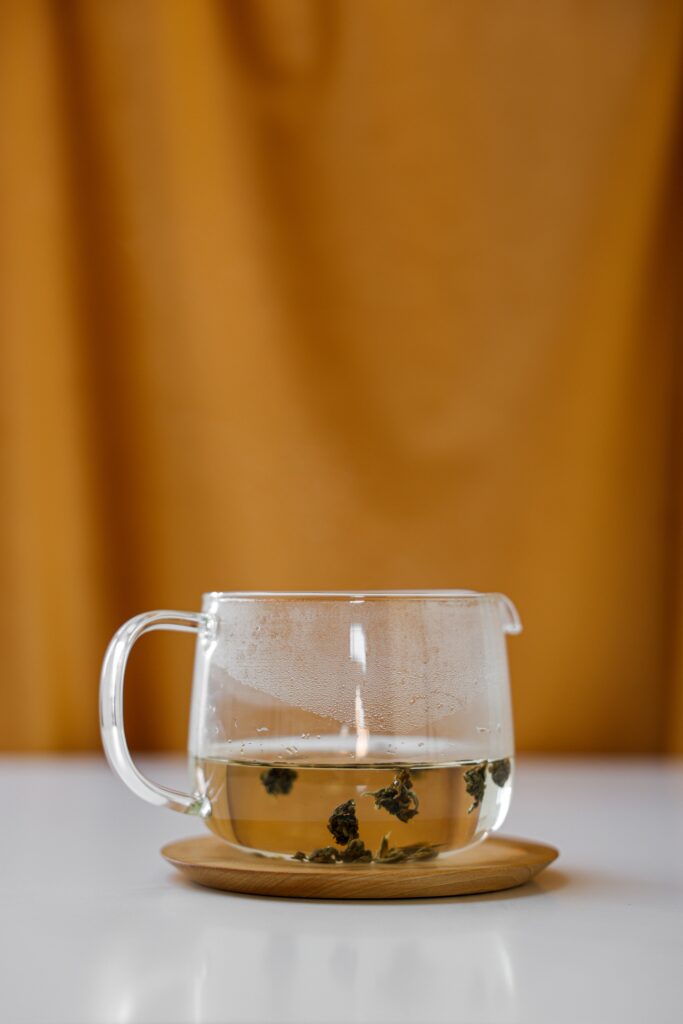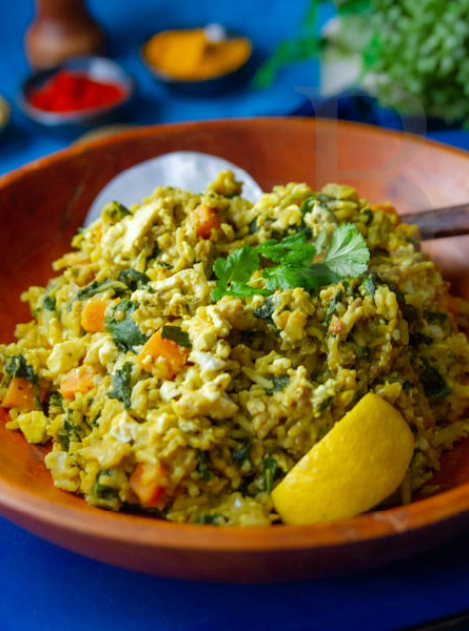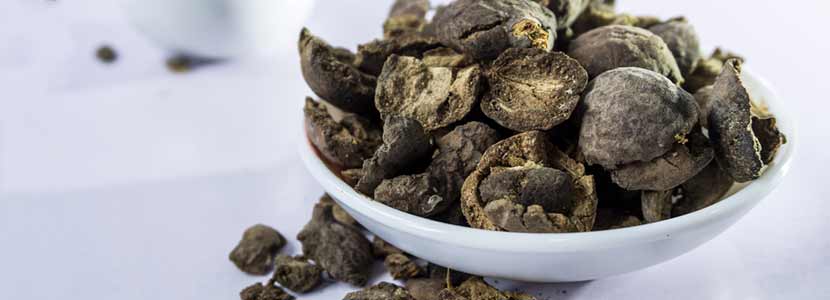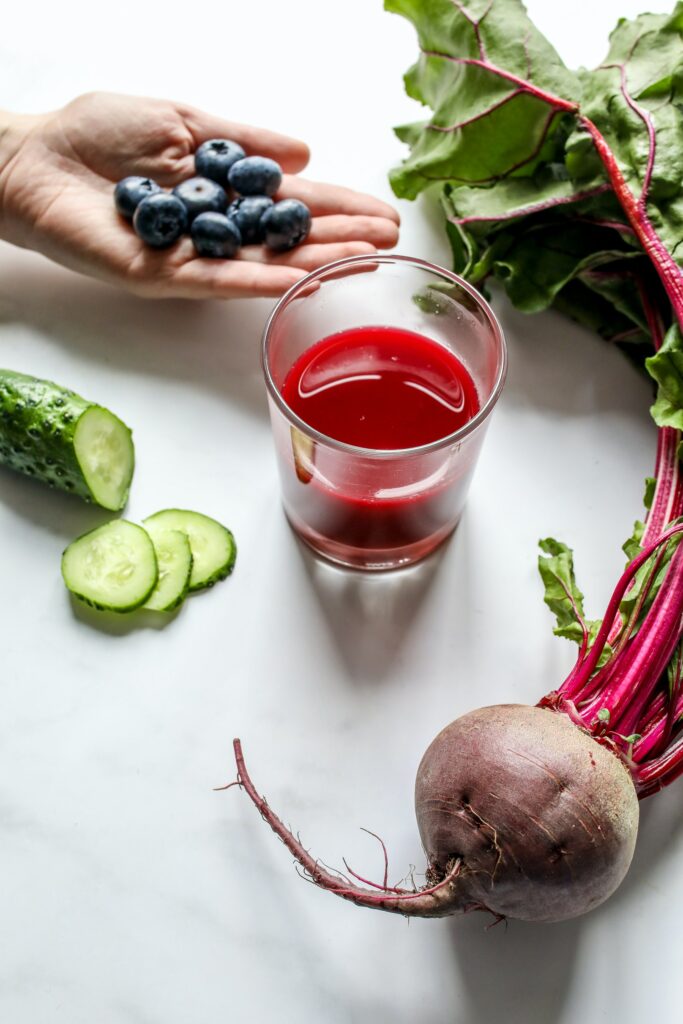Why clean yourself up?


Ayurveda home remedies for detox cleansing is to remove toxins (ama) from the body.
Toxins clog the lymphatic system, weaken immunity and impair organ function, causing fatigue, malaise and anxiety. And you cacth every virus around.
The other purpose is to strengthen digestion (agni). For Ayurveda, all diseases are weak digestion is considered the root of all disease with toxins building up in the first place because of poor food and lifestyle choices.
So to avoid the formation and accumulation of ama, it is necessary to rekindle your digestive fire. This restores homeostasis and proper organs functions.
A Simple Cleanse for the “Day After”


Before getting out of bed, massage your digestive tract. This gently wakes up the digestive organs while massaging your intestines.
Brush your teeth and scrape your tongue (use a spoon if you don’t have a tongue scraper).
Scraping your tongue also massages the energy points in your digestive organs and removes toxins from your mouth.
Then drink a glass of hot water with or without lemon.
Lemon cleanses and is alkalizing. Our bodies are often too acidic, which needs to be corrected to ward off disease. The more alkaline we are, the more we ensure serene days.
Hot water eliminates stagnation, gently cleanses and brightens the body.
Do stretches and yoga that help the body detox by massaging the internal organs and encouraging elimination.
It is also recommended not to eat before having a bowel movement and to be really hungry.
If you don’t feel hungry, you might think about skipping a meal or two to digest the heavy foods you ate the night before.
Do not skip meals but simply swallow a light soup.
And when you’re hungry, prepare a pot of kitchari (easy-to-digest rice and beans) or a simple soup.
Sip hot water or coriander, cumin, fennel tea throughout the day.
Get outside, walk outside as movement and fresh air are essential for detoxification.
Take a warm bath before bed and add Epsom salt if you have them; they will draw toxins through the skin.
The Real Cleansing


A mono-diet of Kitchari provides simple, easily digestible, nourishing foods that support your body for a cleanse.
Kitchari is basically a recipe containing rice and an easily digestible bean.
Ayurveda advises using mung dal, a legume of choice, as it is easy to digest, rich in fiber and slightly astringent (which helps tone the colon).
You can also choose chickpeas or green beans.
Add spices, oil, salt and a vegetable according to taste and your constitution.
Eat three meals of this traditional Ayurvedic dish while cleansing and add plenty of warm fluids to flush the system. Hot water is a simple accompaniment, however you can also incorporate herbal teas according to your doshas.
Massage daily with the oil adapted to your constitution since it improves your blood circulation and thus eliminates toxins.
Cleansing such ayurveda way: sweet and efficient for body
In Ayurveda, everybody is unique, and everyone needs a unique approach to eliminating toxins and strengthening digestion.
What causes toxicity in Vata types is different from what causes toxicity in Pitta or Kapha types, so the origin of toxicity must be considered when designing a cleanse.
Returning to a balanced and healthy digestive fire is also distinct because each body type has unique challenges in digesting, absorbing and assimilating food.
Your practitioner will consider these factors when deciding how to guide you through the cleanse. If you already know your doshas , you can use some of the basic guidelines below. This will assure you of maximum benefit for the time, energy and discipline you put into this endeavor while minimizing the dangers of cleaning.
Vata Cleansing
Vata types need nourishment.
Austerity and fasting are not healthy for Vata individuals and often create more toxins than they release as they are far too exhausting for them.
Instead, Vata needs foods that are nutritious and easy to digest. Vata types need to get enough rest during their cleanse, as they already tend to be deficient.
Vata people should make sure to go to bed before 10:00 p.m. and feel free to take an afternoon nap if needed. Rest helps Vata overactive people to recharge. Vata should soothe the nervous system by slowing down and spending time at home and indulge in comfort and self-education, like a new goal!
After a hot bath, you can take haritaki before bed to promote healthy bowel movements. The goal is to keep the elimination channels (faeces, urine, sweat and breath) healthy during cleansing, as toxins are pulled out of the tissues to be excreted.


Another possible treatment is the homemade enema with a bag of water and a probe to clean the colon. This procedure should be done regularly in vata individuals since the colon is the main site of toxin accumulation.
Kitchari for vata: mung dal, coconut and coriander
Servings: 4
Preparation time: 10 minutes
Cooking time: 60 minutes
In: summer, spring
Cleanser, aids healing
Ingredients
- 1 cup Basmati rice: Vata and Pitta soothing Kapha aggravating
- 1/3 cup cilantro: Vata and Pitta soothing Kapha soothing
- 1/3 cup coconut flakes: Vata and Pitta soothing Kapha aggravating
- 2 tablespoons ghee: Vata and Pitta pacifying Kapha aggravating
- 2 cm ginger (fresh): Vata and Pitta soothing Kapha soothing
- 1/2 cup mung bean or mung dal: Vata, aggravating Pitta and pacifying
- 1/4 teaspoon salt (mineral salt): Vata pacifying Pitta and Kapha aggravating
- 1/2 teaspoon turmeric: Vata and Kapha soothing Pitta aggravating 6 cups water: Vata and Pitta soothing Kapha aggravating
How to prepare this healthy recipe
Wash mung dal and rice separately. Soak the mung dal for a few hours if you have time, then strain it. Put the ginger, coconut, cilantro and 1/2 cup water in a food processor and blend until liquefied. Heat the ghee over medium heat in a large saucepan and add the mixture, turmeric and salt.
Stir well and bring to a boil to release the flavor. Then add the rice, mung dal and the six cups of water. Bring back to a boil. Boil, uncovered, for five minutes.
Then cover, leaving the lid slightly ajar. Lower the heat to simmer and cook for 25-30 minutes, until the dal and rice are tender.
Much like a comforting bowl of grandma’s chicken soup, kitchari will leave you feeling nourished and satisfied. This Kitchari Pacifies Pitta and contains the best Ayurveda foods to reduce inflammation.
It cools and soothes internally so you feel refreshed and comfortable after eating. Although tridoshic, this kitchari is particularly suited to Pitta types who tend to feel overheated, irritable, or stressed.
Cilantro and coconut are cooling foods that remedy a Pitta. A combination of sweet and subtle flavors, this meal helps calm an inflamed digestive tract. Hearty but light, it satisfies your hunger but remains easy to digest.
Kitchari is a staple in the Ayurvedic diet and is considered the cleansing meal. However, it can be enjoyed anytime to give your stomach a much-needed break after eating complicated foods or eating on the go. Kitchari is the perfect meal to use when recovering from illness, when you just want to reset, or when you want to do an Ayurvedic cleanse.
Ayurvedic medicinal qualities
Taste: astringent
Doshas: pacifies vata, soothes pitta and kapha
Effects: sattvic, ojas, prana, tejas, alkalizing
- Bone and joint: anti-arthritic
- Digestion: digestive, carminative, antacid
- Cleanses burns toxins
- Energy: boosts energy , nutritive
- Heart and circulation: vasodilator, blood tonic, alterative, refrigerant
- Immune system: anti-inflammatory
- Liver and gallbladder: cholagogue
- Lung and sinuses: flush sinuses
- Weight loss: hypolipidemic
- Bowel elimination
Pitta cleansing
Pitta individuals have a strong digestion and a high metabolism. They may need to eat larger amounts of food to feel full.
Pitta Kapha people can also do a juice fast during the warmer months. Enjoy fresh green juices at mealtime to refresh, cleanse the liver, and sip CCF tea throughout the day as needed.
Practice yoga including twists and emphasizing the breath (especially the exhale) to cool, calm the body and remove heat and detoxify the liver.
Sleeping at 10:00 p.m. is highly recommended. Before going to bed, a mild purgative like triphala or bhumyamalaki will cleanse the colon and support the liver.
Pitta needs to purge unlike Vata which needs an enema to cleanse itself. This part is optional, but if you want to finalize your cleansing, drink a cup of ginger tea with licorice and a tablespoon of castor oil. Do this before you go to bed on the last night of your cleanse and wake up naturally without an alarm clock because you’ll want to stay close to your bathroom.
Kitchari for Pitta
Ingredients
- 1 teaspoon cumin seed, whole
- 1/8 teaspoon freshly ground black pepper
- mixture of 1/2 tsp turmeric, 1/2 tsp cumin powder, 1/4 tsp coriander powder, 1/4 tsp fennel powder and a pinch of cardamom.
- 2 tablespoons finely minced ginger
- 2 tablespoons ghee
- 6 cups water
- 1 cup mung dal
- 3/4 cup basmati rice
- 1/2 cup chopped zucchini
- 1/2 cup chopped yellow squash
- 5 asparagus stalks, chopped
- 1 large celery stick, thinly sliced
- 1 large kale, stemmed and thinly sliced
- 1/2 cup of fresh cilantro, finely chopped
- 1 lime, juiced
- 1/2 teaspoon pink Himalayan salt
- Chopped cilantro, for garnish
- Shredded coconut, for garnish
- Ghee, for individual servings
Ayurvedic medicinal qualities
- Reduces overall Pitta in the body and mind
- Easy to digest
- Strengthens and balances Agni (digestive fire)
- Cools and cleans liver and blood
- Reduces inflammation
- Beneficial in most Pitta disorders such as skin disorders, acne, hives, rashes, inflammation, arthritis, anger, judgement, criticism, hyperacidity, loose stools, diarrhea and inflammatory problems of the digestive tract.
- Great recipe for Pitta types during Ayurvedic cleanses.
- Great recipe for late spring, summer, and early fall (but can be enjoyed year-round for Pitta types and Pitta imbalance).
Preparation: Following the same instructions as Vata with Pitta
Kapha cleansing


Kapha’s ingredients can make for a more aggressive cleanse since Kaphas tends to overdo it easily. They can limit themselves to a meal of kitchari at noon and sip hot water coriander, cumin, fennel as needed to cleanse excess fluids in Kapha.
Perform a nasal wash with your neti pot and add 2 drops of sesame oil to clear the sinuses as Kapha tends to clog mucus. Postnasal drip leads to excess gastric mucus, which hampers digestion.
If possible, practice a dry sauna ideal for wet and cold Kapha types.
Kapha should practice dry brushing the skin and exercise daily. They benefit from a more invigorating yoga practice emphasizing backbends and inhaling to open and clear the lungs and enliven the body. They too should take triphala before bed and aim to fall asleep by 10:00 p.m. Rather than napping during the day, Kaphas should aim to go to bed earlier if he feels exhausted.
Kitchari for Kapha
Servings: 4
- Prep Time: 10 mins
- Time: 60 mins Harm Level: Easy
- Spring, Fall-Winter
- Repairs, Cleanses
Ingredients:
- 1 cup Basmati Rice: Vata and Pitta soothing Kapha aggravating
- 4 Bay Leaves: Vata and Kapha pacifying Pitta aggravating
- 1/4 tsp cardamom Vata Kapha and Pitta soothing
- 1/2 tsp cinnamon: Vata and kapha pacifying, Pitta aggravating
- 1/4 tsp cloves Vata and Kapha soothing, Pitta aggravating
- 1 tsp cumin Vata aet Kapha soothing Pitta aggravating
- 2 tbsp ghee: Vata and Pitta pacifying Kapha aggravating
- 1 cm fresh ginger: Vata Pitta and Kapha soothing
- 1/2 cup mung bean: Vata aggravating Pitta and Kapha pacifying
- 1/4 teaspoon salt mineral: Vata pacifying Pitta and Kapha aggravating
- 4 cup water: Vata and Pitta soothing Kapha aggravating
Preparation
1. Use split mung beans if possible. Soak mung beans for several hours before cooking and drain. Add 6 cups of water and bring to a boil, skimming off any foam that forms on top. Then strain the liquid and add another 4 cups of fresh water to the mung dal.
2. When mung beans are dissolved in broth (1-3 hours depending on desired texture), grind ginger, cinnamon, cardamom and cumin.
Make a thick paste by adding a little water. Leave to stand for five minutes, then sauté in the ghee until the spices become aromatic but before they turn brown.
Deglaze the pan with 1/4 cup water to soak up any remaining flavor from the spices and add to the mung soup.
3. Add rice and remaining ingredients to broth. Stir. Cover and cook over low heat for 20-25 minutes or until the grains are tender.
Ayurvedic medicinal qualities
Easy to digest, cleanses toxins, helps reduce weight
Tastes : acrid, bitter, astringent
Doshas : soothing Vata Soothing Kapha Pitta aggravating
Effect : Sattvic, Prana, alkalizing, ojas
Medicinal properties
- Carminative
- Digestive
- Antispasmodic
- Detoxifying
- Burns toxins
- Stimulates energy
- Cardiac
- Vasodilator
- Antimicrobial
- Anthelmintic
- Diuretic
- Decongestant
- Galactagogue
Longer cleansing
These techniques require more planning, time and commitment. It is a period of rest without stress.
- A 1-3 day cleanse done correctly and with full commitment often brings great benefits with minimal effort. Better to opt for this than to push yourself into a 5 or 7 day cleanse that you can’t give your full attention to. This type of cleaning can be a little more intense because it only needs to be done for a maximum of 3 days. Most people can easily eat kitchari for 3 days without getting fed up or feeling weak.
- Deep cleaning can last 7-10 days. A cleanse like this gives you time to do a more gradual cleanse so it shocks the system less. You can cut out the foods you need slowly and steadily without feeling too deprived. The downside is that it can be difficult to maintain discipline for so long. I also offer you a detox program over 9 days. Nothing to do… just follow the program.
- Longer cleanses last from 14 days to 3 months this is panchakarma. These types of cleanings require the supervision of an experienced practitioner and a high commitment on the part of the client.
Contraindications for cleansing
Cleansing eliminates toxins, but the process of eliminating toxins also tires your body.
Many of my patients do impromptu home cleanings without guidance or use new cleaning techniques that are unsuitable for their constitutions.
And often come to me with health problems caused by improper cleaning. Ayurveda’s approach is more gentle.
Ayurvedic methods minimize exhaustion while maximizing the release of toxins and these methods are especially tailored to each person’s constitution to ensure that your cleansing supports you.
Avoid detoxes during menstruation, because the body is already cleansing. Ayurveda always considers a person’s age and strength to determine which cleansing is optimal. The person should not be too young (under 7), too old (over 70) or too exhausted.
We will not do a detox during pregnancy or breastfeeding, however a cleansing 3 months before becoming pregnant is a common Ayurvedic practice.
We will also avoid detoxes during illnesses because the body is already tired to fight.
When to clean up


- After a vacation,
- A party,
- A period of stress,
- A period of excess.
Early fall and early spring are considered the best times to detox. If the temperatures are extreme (hot or cold), it is better to avoid intense cleaning.
Cleanses are also recommended when you begin to feel sick in order to prevent illness. In some cases, a detox is useful right after an illness to ensure full recovery and rejuvenation.
The longer you clean, the longer you need to recover. For all dosha types, it is important to maintain a solid routine when cleansing.
Eat, wake up and sleep at the same time every day.
For longer cleans, consider taking time off work, staying still, staying home, staying warm, and limiting social obligations.
Recovery
Coming out of a mindful cleanse is just as important as doing a mindful cleanse.
foods easily digestible and simple
For example, if you did a 3-day cure, simply eat for 3 days after your cure. Continue to maintain a solid routine as your body comes back into full swing.
Support your body and healing by periodically scheduling detox times. Attention and prevention are the best allies to maintain our health.
References
Ayurveda and Panchakarma: Measuring the Effects of a Holistic Health Intervention
Lifestyle disorders: Ayurveda with lots of potential for prevention
